
|

|
| Genesis, 6000-1800 BC | |||||||||||||||||||||||||||||
Archaeological Time Periods
|
|
||||||||||||||||||||||||||||
 |
2500-1200 BC Five cuneiform tablets 2500-1200 BC |
|
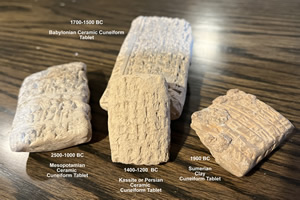 |
2500-1200 BC Four cuneiform tablets 2500-1200 BC |
 |
 |
3200-2500 BC Stamp Seals < Stamp seal with a cross or "X" in ceramic and one with drilled holes in marble. Two stamp seal coned backs |
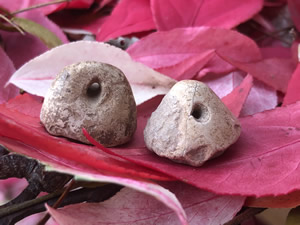 |
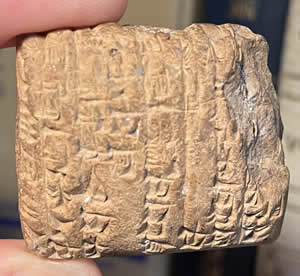 |
1900 BC Cuneiform Tablet from Old Babylon with Sumerian Inscriptioins both sides < Obverse Reverse > |
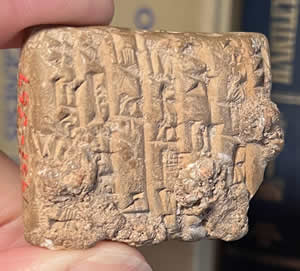 |
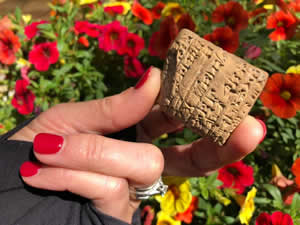 |
1900 BC Cuneiform Tablet from Old Babylon with Sumerian Inscriptioins both sides < Obverse Cuneiform text on side of tablet. Could be for reference to the document while setting on a shelf like the title of a book on the spine of the book. > |
 |
 |
1900 BC Cuneiform Tablet |
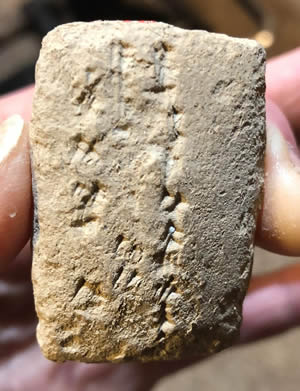 |
The Gilgamesh Epic of the king of Uruk from around 2800 BC were written down around 2100 BC. The plaque to the right shows Gilgamesh standing in victory on the slain head of Humbaba which is recorded in the fifth tablet (OIM). >
< Clay tablet the the account of Gilgamesh, Enkidu and the Netherworld recorded in cuneiform around 1750-1740 BC. The translation would read:
(Click on all photos to open a larger image.) |
||
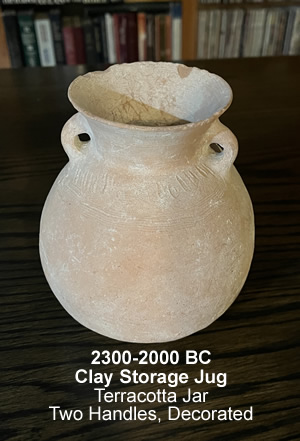 |
2300-2000 BC A decorated Terracotta Jar |
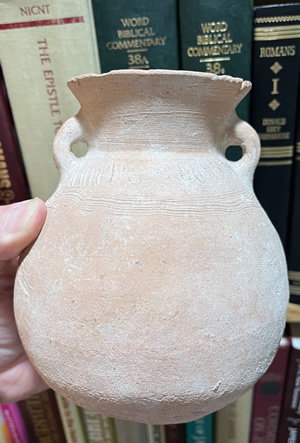 |
 |
2300-2000 BC < A decorated Terracotta Jar 2300-2000 BC
2300-50 BC
|
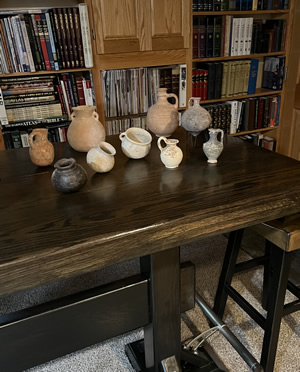 |
 |
2000-1500 BC Bronze Age Juglet |
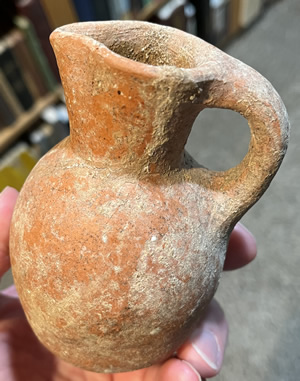 |
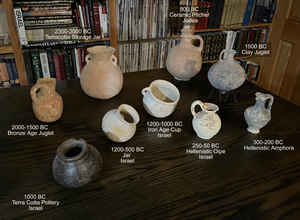 |
2300-50 BC Ancient Jars and Vessels |
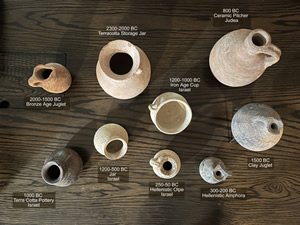 |
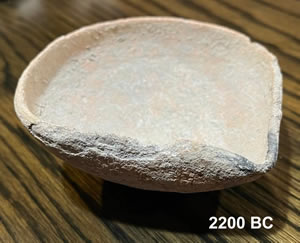 |
2200 BC < 2200 BC Oil Lamp 2200-2000 BC Oil Lamp > |
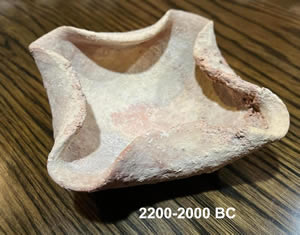 |
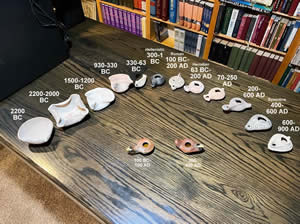 |
2200 BC-900 AD < Oil Lamps from the time of the Bible
|
|
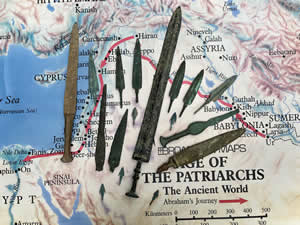 |
2100-600 BC Swords, Daggers, Spearheads, Arrow Points |
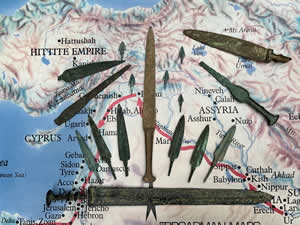 |
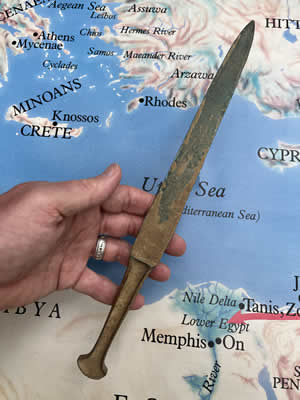 |
2100-1570 BC Bronze Dagger from Luristan in Eastern Turkey or NW Iran < side one side two > |
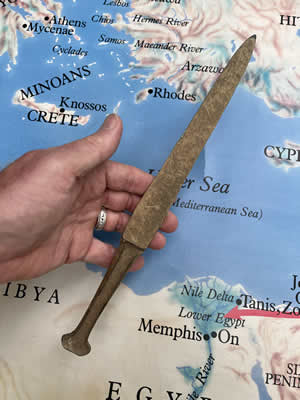 |
 |
2100-1570 BC Bronze Dagger
|
 |
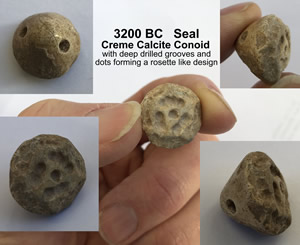 |
3200 BC Crème Calcite Conoid Stamp Seal This Sumerian marble stamp seal cut into a shape of a cone is designed with deep drilled grooves and dots forming a rosette pattern. |
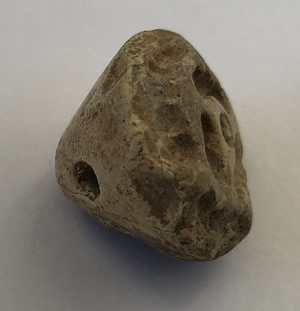 |
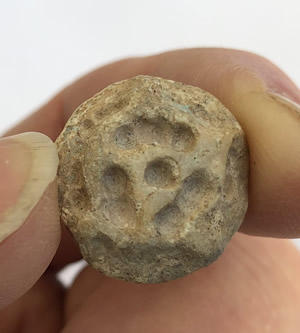 |
3200 BC Crème Calcite Conoid Stamp Seal < Impression side used to press personal image is a rosette design made by drilling circular holes into the stone to form a rosette pattern. The back of this stamp seal stone has been cut into a cone shape and a suspension hole has been drilled through the cone to hang on a necklace or string. > |
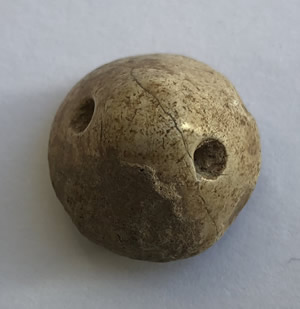 |
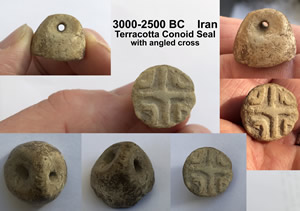 |
3000-2500 BC Ceramic Stamp Seal A terracotta stamp seal with Cross or “X” |
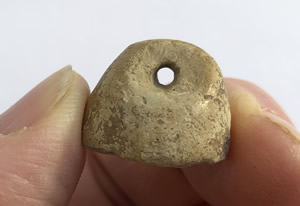 |
 |
3000-2500 BC Ceramic Stamp Seal < A terracotta stamp seal with Cross or “X” Pinched back with suspension hole > |
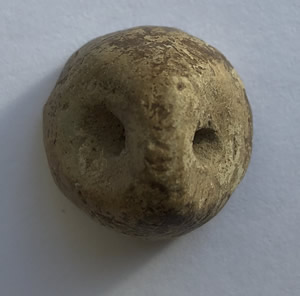 |
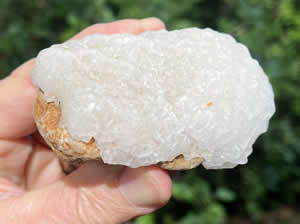 |
SALT FROM THE DEAD SEA |
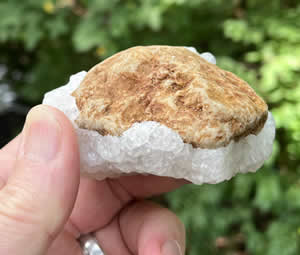 |
Gilgamesh Cuneiform Text in the British Museum |
||
|
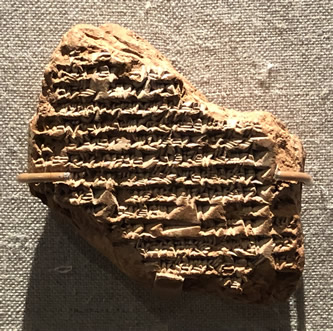 "This fellow - how similar to Gilgamesh he is in build, he is tall in stature, majestic in battlement. For sure he was born in the hills, his strength is mighty as a lump of rock from the sky." "Gilgamesh heard the word of his companion. |
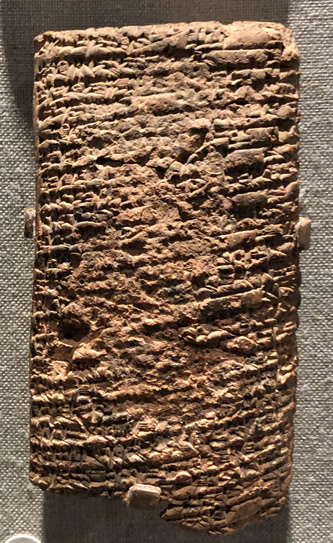 |
Mesopotamian Temple Statues |
||
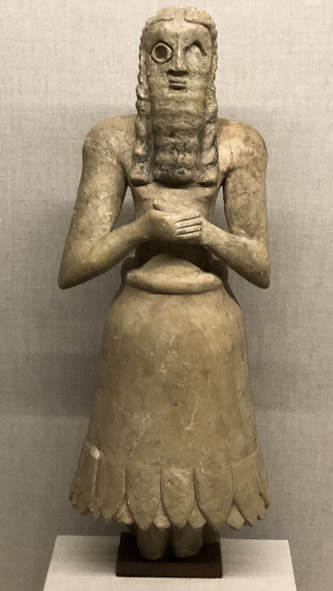 |
< Mesopotamian Temple Statue of a male worshipper was placed in the temple before the god Sin (or, Nanna) the moon god to continually represent the worshipper. This is from the time period of Abraham's forefathers 2900-2300 BC and was excavated in 1933-34 at Khafajah, Iraq. (OIM, Chicago)
Mesopotamian Temple Statue of a female worshipper was placed in the temple before the god Sin (or, Nanna) the moon god to continually represent this woman worshipper. This is from the time period of Abraham's forefathers 2600-2300 BC and was excavated in 1933-34 at Khafajah, Iraq. (OIM, Chicago) >
More personal statues left in Mesopotamian temples by worshippers of the gods in |
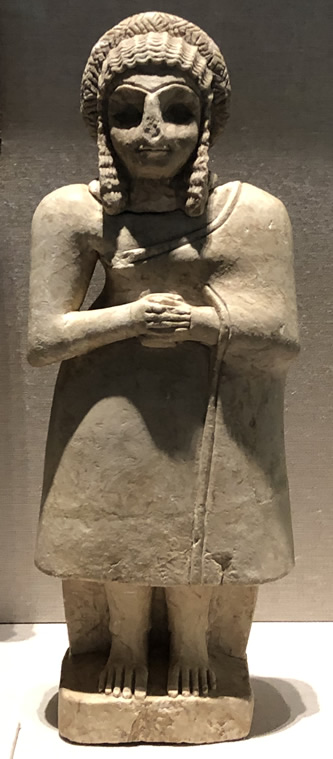 |
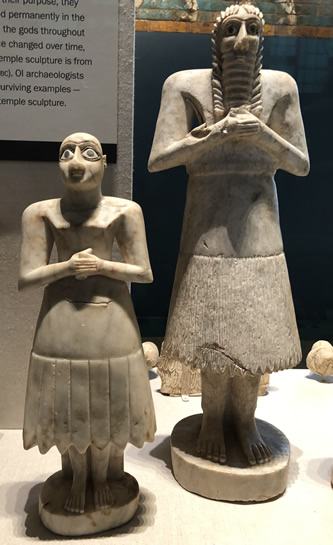 |
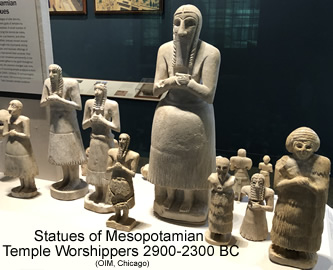 |
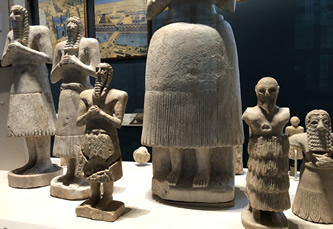 |
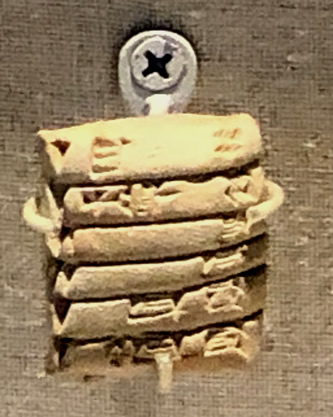 |
< Cuneiform script is written left to rightusing a reed stylus to first divide the clay tablet into lines and then to form the letters or cuneiform signs. This clay tablet is from the time of Abraham and is dated to 2046 BC in Iraq. The text is a recording about sheep, lambs and one goat. (OIM, Chicago)
An example of cuneiform script being engraved into stone by a scribe skilled at stonecutting. This is piece of stone contains a dedication inscription which was placed in the foundation of a building around 2094-2047 BC. (OIM, Chicago) > |
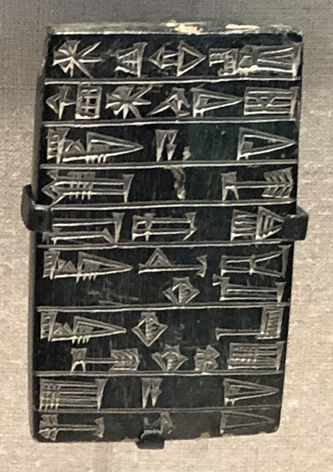 |
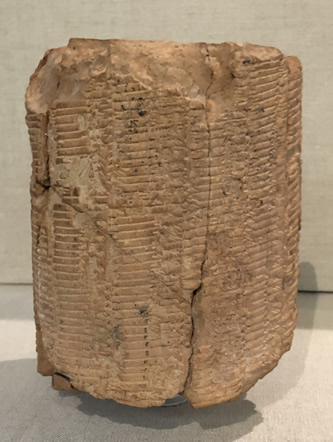 |
< From 2004-1595 BC a clay cylinder with multiplication tables arranged in 13 columns forming a table of reciprocals followed by 37 multiplication tables. There is a hole running through the center of this cylinder so that it could be placed on a column to be rotated like a globe on the scribe's desk. A tablet preserves a list of concise and abstract mathematical problems. > One of the sections can be translated with our modern notation: P = 1/7 x 1/11 x {2,29 + [ length = width + 2 x(length - width) ] } |
|
 |
< Hammurabi Code Fragment from a stele dedicated by a high official of Hammurabi's named Itur-Ashdum to the goddess Ashratum. This is only a fragment of one of the stele, but the goddess's hand can still be seen extending from the right side of this broken stele. This is from 1760-1750 BC. (British Museum) King Hammurabi (1792-1750) is the carved figure standing to the left of the cuneiform inscription. Hammurabi is facing the goddess Ashratum who is seated and giving Hammurabi the law or this legal code. Hammurabi is receiving the law/code and worshipping the goddess. |
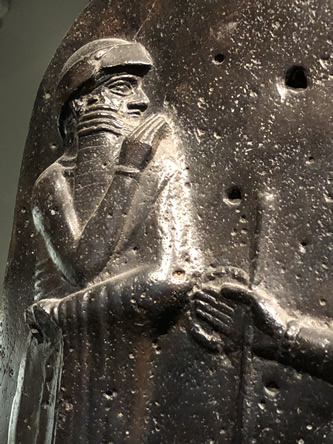 |
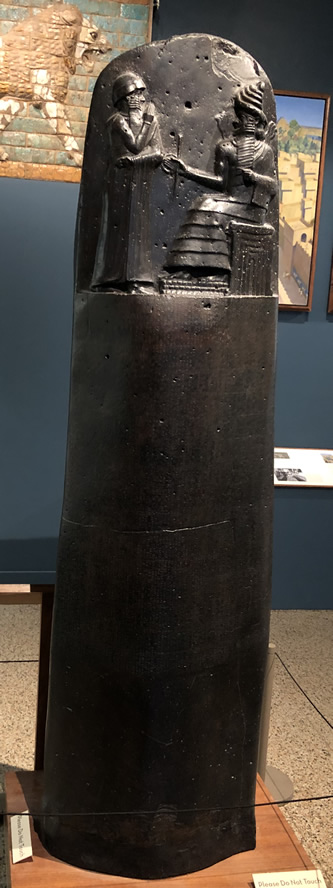 |
Hammurabi Code on a stele (OIM) |
|
|
||
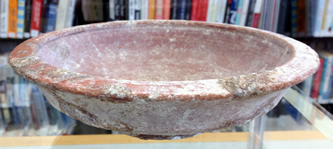 |
<Fruit bowl from the days of Abraham Oil lamps from the days of Abraham, Isaac, Jacob and Joseph> |
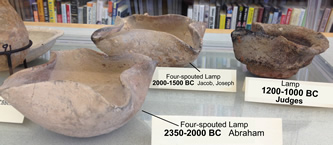 |
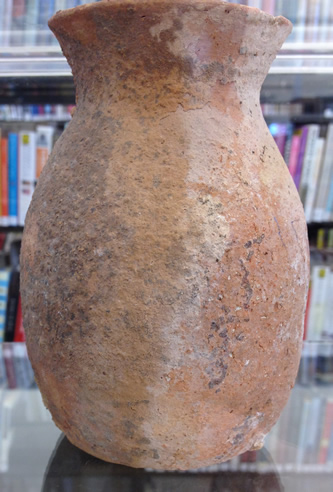 |
<Milk jug from the days of Abraham (2000 BC) |
|
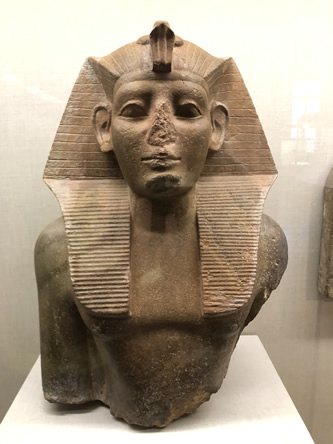 |
Neferhotep I reigned in Egypt 1747-1736 BC. This is a quartzite statue found in Osiris Temple in Abydos, Egypt. Neferhotep is shown wearing the royal dress which included a striped fabric head cover (nemes) which was striped blue and gold. The deity protecting the Pharaoh is the cobra (uraeus) which decorates the forehead and spit fire at Pharaoh's enemies. This is the time right after Joseph's death and may be the pharaoh mentioned in Exodus 1:8 that no longer remembered Joseph and oppression of the Hebrews followed. |
|
 |
Amenemhat III was Pharaoh (1860-1814 BC) while Joseph was still alive in Egypt. Amenemhat III reign was the golden age of the 12th Dynasty in the Middle Kingdom. His father was Sesostris III. |
|
Photos were taken by Galyn Wiemers of All images may be downloaded, published, uploaded or freely used for further study and Bible teaching. |
For Bible teaching audio, video, notes and |